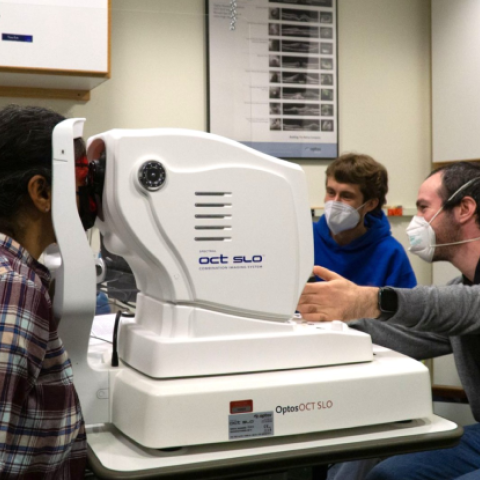
- Principal Investigator:
- Preeti Verghese
In daily life, we generally explore our surroundings visually before we plan action. Because visibility is poorer in the periphery we must move our eyes to gather task-relevant information, but which locations should an observer fixate? Research with single-target search paradigms indicates that observers saccade to salient and likely target locations. This latter strategy, although efficient for single targets, is inefficient under more demanding conditions that involve cluttered environments and time pressure. We examine eye movement strategies for complex information gathering under time pressure using a laboratory task that presents an unknown number of targets in noise. Under these conditions, we propose that the most efficient strategy is to saccade to the most uncertain locations, or locations that appear equally likely to be target or noise. Our studies indicate that observers do not use an efficient strategy, but instead make eye movements to locations where the target is clearly visible. We are currently investigating the relation between latency and saccade strategy as well as the effect of immediate feedback, and reward.

